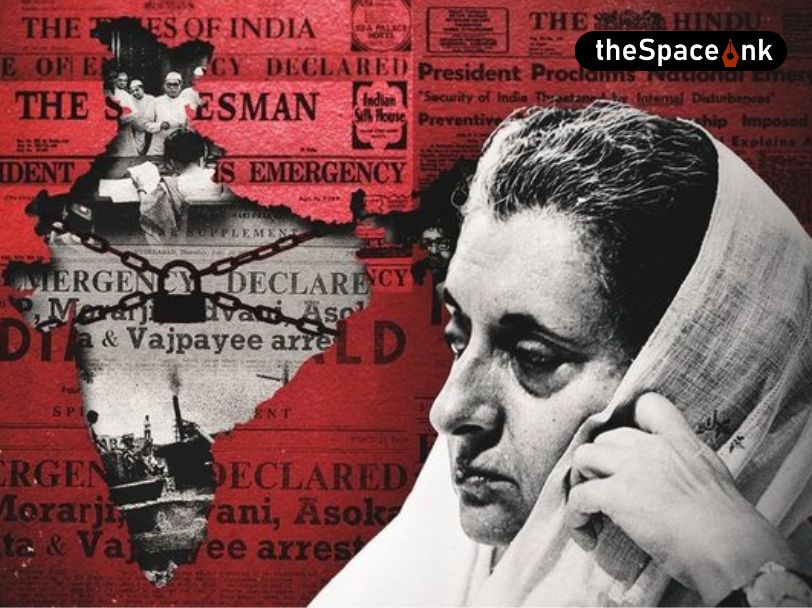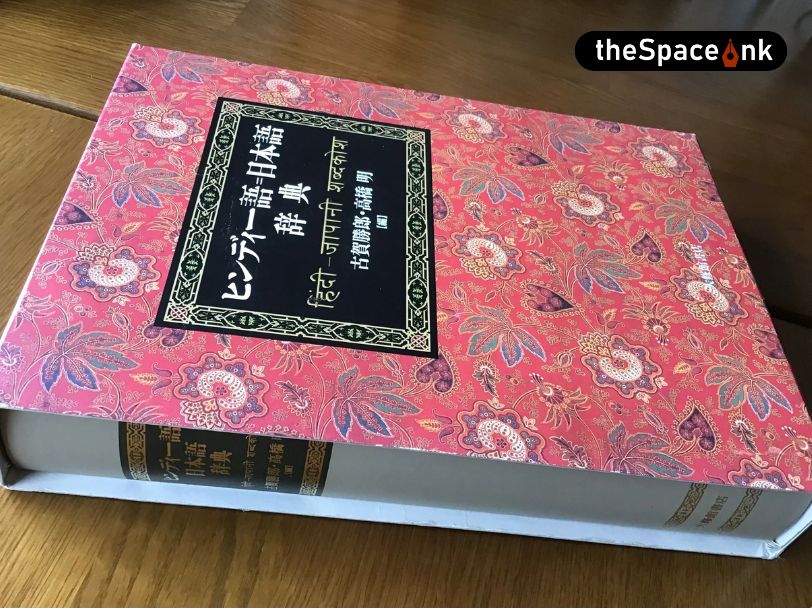On 24th July, 1871, an announcement for the inauguration of a School of Hindu Music was published in a leading bilingual weekly, ‘Amritabazar Patrika’, based in Calcutta (now Kolkata). The short notice was a ‘call for application’ from Shri Haramohan Bhattacharya, who was to become the Honorary Secretary of the school:
“A music school is going to be opened in Jorasanko. The monthly fees would be one rupee, and classes will be held from six to nine in the evening. Young students would not be admitted without written permission from their parents. Under the mentorship of Kshetramohan Goswami and professorship of Uday Chandra Goswami and Kaliprasanna Bandopadhyay, both ‘theoretical’ (aupapattika) and ‘practical’ (kriyasiddha) music will be taught.”
Other than the details regarding the location of the school, name of teachers, fee structure, class timings and entry criteria, the published announcement also clearly demarcated theoretical and practical knowledge of music as two separate fields of study and that the school will aim to bring both of them together in its teaching.
More than a year before this, on 22 May, 1870, Sourindro Mohun Tagore, the man behind this entire initiative, gave a public lecture on music at the Calcutta Training Academy premises as part of the third session of Jatiya Sabha. It was after this lecture on music, that Tagore was collectively proposed to establish a school of music and take charge of it.
Sourindro Mohun Tagore’s public lecture kickstarted the process that eventually brought about the establishment of the first known Indian music school in Calcutta and also in India. It was called the Bengal Music School, established a year later, within the premises of the Calcutta Normal School, at 83, Chitpore Road in north Calcutta. Babu Gopal Chandra Banerjee, the Headmaster of the Calcutta Normal School, facilitated the use of the school premises for music classes in the evenings. Calcutta Normal School was a government-run professional training institute for primary school teachers. Both vocal and instrumental music classes began for three days-a-week- Monday, Wednesday, and Friday from 7 to 9 p.m. The fee was fixed at one rupee a month which was only occasionally waived for certain students. All other expenses were managed by Tagore himself.
The establishment of the Bengal Music School (Banga Sangita Vidyalaya) on 3rd August, 1871 in Calcutta by Sourindro Mohun Tagore was a major step in institutionalizing music pedagogy and introducing formal music education and training to the public. Tagore’s public lecture, titled Jatiya Sangita Bishayak Prastab, was not only the first documented public lecture on music in India, its publication as a seventy-eight-page book, interspersed with seven fully notated songs and detailed description of the notation system also marked the beginning of Tagore’s career as a musicologist which was to culminate into more than forty publications on the subject of music.
The Bengal Music School started with 19 students in August 1871. By the end of a year in July 1872, the number had grown to 43. The school was growing steadily and had 56 students enrolled by the second year, ending in July, 1873. By then there were five classes- two each for vocal and instrumental music (sitar), and one for percussion (mridanga). Later, a branch of the school started operating at the premises of the Calcutta School in neighbouring Kolutola (earlier Kolutolla) area. Keshab Chandra Sen, the well-known social reformer, facilitated the use of the school for bi-weekly classes. Following Bengal Music School, other music schools were established in the suburbs of Konnagore and Shibpur, where the latter had fifteen students in March, 1874 as reported by The Illustrated Daily News. Tagore himself also extended his financial support for the Shobha Bazar Banga Vidyalaya, an infants’ school.
The establishment of the Bengal Music School (Banga Sangita Vidyalaya) on 3rd August, 1871 in Calcutta by Sourindro Mohun Tagore was a major step in institutionalizing music pedagogy and introducing formal music education and training to the public. Tagore’s public lecture, titled Jatiya Sangita Bishayak Prastab, was not only the first documented public lecture on music in India
It was Tagore’s concerted effort along with his teacher Kshetramohan Goswami, to strongly establish a pedagogy that was aimed towards an all-rounded development of music learning simultaneously through training in vocal, instrumental (sitar and harmonium), and percussion (mridanga) music, and theory classes. A management committee was set up with the honorary secretary and members: Tagore himself remained the President of the school while Khetramohan Goswami was nominated General Superintendent and Kaliprasanna Banerji as the Head Teacher.
The school initially had two teachers: Udaychand Goswami for the vocal department and Kaliprasanna Banerji for the instrumental department (Sitar). During the second session (1872-1873) Mridanga (present-day Pakhawaj) was added to the training module under the supervision of Kalicharan Mitra. During the third session (1873-1874), a violin class was added under the tutelage of Babu Brojonath Chakraborty. Later, Kalipada Mukherjee, whose Bahoolina Tatwa (a treatise on violin) was already followed for teaching, joined as the violin teacher. Guru Prasad Mishra, an eminent vocalist, joined later as a vocal teacher in the school probably after the premature death of Udaychand Goswami. Ramprasanna Smritiratna, a Sanskrit pandit, taught music theory, and Madan Mohan Burman taught harmonium lessons. The teachers were encouraged by special mentions in the annual reports and by giving them important roles in organising the annual prize distribution events and training the students for performances. The contributions of Kaliprasanna Banerji as the head teacher received a prominent mention in the Third Annual Report, “that he has not been absent for a single day from the commencement of the institution”. Tagore envisaged a minimum of five-year term at the school for the students to achieve an acceptable level of competence in the subject and encouraged them by awarding medals.

Protecting the respectability of the school and at the same time making music respectable was the prime concern of Tagore in his endeavour to institutionalize music in the European traditions. The teachers were designated as “professor of music” (Sangita Adhyapak). However, their lives as professional musicians remain largely unknown. On the other hand, Muslim ustads (an honorary title for Muslim musicians) in the city were never appointed in the school as teachers, although Tagore was not only in close contact with them, he seemed to have briefly studied with the Sitar-Surbahar exponent Sajjad Mohammad Khan, had Imdad Khan on payroll at his private durbar and invited Muslim musicians for performances at important occasions at the Bengal Music School including Maula Baksh (1874), and Ahmad Khan and Ashgar Ali Khan (1876).
The key musical text followed for musical instruction at the school was Kshetramohan Goswami’s “guide” to the successful “cultivation” of vocal music– Kantha Koumudi. The element of vocal instruction entailed the practice of swaragrama-based vocal exercises (sargams in the contemporary vocabulary) that Goswami carefully designed for the students. In addition to this, learning to read notation to “sing from the book” emerged as the most important aspect of music learning. The ability to read from the book not only conformed to the bourgeois narrative of self-improvement but also to the important lesson of self-reliance (swabalamban) that was key to Bengali bhadralok agency. The adoption of the swaralipi as a standard pedagogic tool at the school was clearly aimed to standardize the musical pedagogy and its repertoire amongst the Bengali music enthusiasts. This notation system (swaralipi) was the “modern improved system of Hindu notation” that Goswami had recently “innovated” to “write” down the music on paper. This swaralipi later came to be known as the Dandamatrik (use of a danda or a bar line to denote time) as opposed to the more popular akarmatrik swaralipi used by Rabindranath Tagore to standardise the musical structure of his compositions.
Tagore wanted to share the benefits of the system of musical instruction based on the “most improved principles of notation” and his broader goal was to “promote the love of music amongst his countrymen, as a means of elevating their tastes and promoting rational recreation amongst them.” The “respectable” status of the music school ensured support from British administrative officials in the Education Department which translated into grants-in-aid for the school. Prior screening was necessary for the recruitment of teachers and admission of students in the school. As part of the “strict” discipline at the institution, the admission of students to the school required the production of a “certificate of good character” and a permission letter from parents in case of young “boys.”
The establishment of the Bengal Music School marked the beginning of Indian music education in the formal institutional space as opposed to the previous model of private, intimate, one-to-one learning. Bengal Music School opened its doors to the “public” where “anyone” could learn vocal or instrumental music by paying a standard fee per month. Regular examinations, separately on the theoretical and practical, were conducted by Tagore and Goswami with occasional guest lectures being organized for the students. In Bengal, Sourindro Mohun Tagore’s efforts in introducing music education within the formal institutional space culminated in the incorporation of music as a subject of undergraduate study recognised by the University of Calcutta, almost six decades later, in the late 1930s.
Very little is known about the students of Bengal Music School – there isn’t any known student who went on to become a performing musician, although few of them pursued careers related to music. Lokenath Ghose, the secretary at the school went on to become a banker and Baikuntha Nath Bose became the secretary of Bengal Music Academy. Sarada Prasad Ghosh went on to publish The Music of Hindustan (1879) and also co-edited two important Sanskrit manuscripts on music along with Kalivara Vedantavagisa – Sangita Ratnakara and Sangita Parijata in 1879. Dakshinacharan Sen, who trained in Harmonium under Madan Mohan Burman at the school, became the leader of Blue-Ribbon Band and also published “A Collection of Airs for Concert” (1885).
Images used in this article are from the public domain.
Notes:
The Calcutta Normal School was established sometime in 1850. “Normal” schools were government-sponsored schools setup as professional training institutes for primary school teachers under the supervision of the Calcutta School Society (1818), which was the joint initiative of David Hare and William Carey, with the aim to introduce identical teaching methods.
Kolkata was known as Calcutta before 2001.
References:
- Aneesh Pradhan, Hindustani music in colonial Bombay, Gurgaon: Three Essays Collective, 2014.
- Michael David Rosse, “The Movement for the Revitalization of “Hindu” Music in Northern India, 1860-1930: The Role of Associations and Institutions,” PhD Diss., University of Pennsylvania, 1995.
- Amrita Bazar Patrika [Weekly], Vol 4 Issue 24, July 27, 1871, 6, British Library, EAP 262/1//1/62, https://eap.bl.uk/archive-file/EAP262-1-1-14.
- Amrita Bazar Patrika [Weekly], Vol 3 Issue 16, June 2, 1870, 1, British Library, EAP 262/1//1/14, https://eap.bl.uk/archive-file/EAP262-1-1-14 (translation and italics mine) The digital copy was accessed from the CSSS, Kolkata library.
- Third Annual Report of THE BENGAL MUSIC SCHOOL Calcutta: Presidency Press, 1875. (This was the first official printed report of the school. The section ‘The Bengal Music School’ provides useful details of the school activities since commencement.)
- The Bengal Music School Fifth and Sixth Sessions 1875-77, Printed by I.C.Bose & Co., Stanhope Press, 249, Bowbazar Street, Calcutta, 1877.
- Public Opinion and Official Communications, About The Bengal Music School and Its President, Calcutta: Printed By I.C.Bose & Co., Stanhope Press, 249, Bowbazar Street, And Published by Panchanun Mookerjee, 1876.
A vocalist of Patiala Gharana and a scholar.







